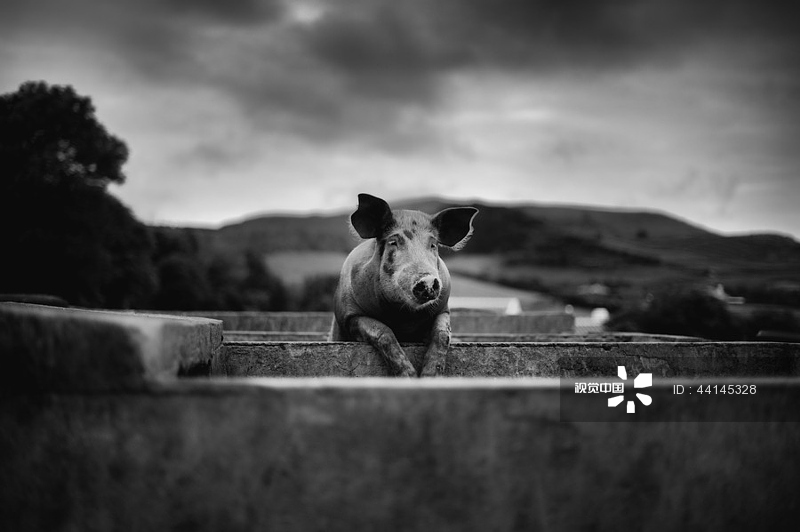Your Location:Home - News Updates > - Content
News and Information
Pig Raised By NetEase Sells For RMB100,000 On Online Auction
Time:2016-12-07 14:54:11
Source: itdadao.com

So far, the whole black pig that NetEase raised was auctioned at RMB108,001 after 60 biddings. Up till 22:00, one gift package of the braised black pork was auctioned at RMB4,060 after 48 biddings.
On the third World Internet Conference, NetEase’s black pig business already gained lots of attention as industry leaders praised highly of the pork. Gu Yongqiang for example commented that Ding Lei’s pork was indeed incredible and that his son really liked it. Yang Yuanqing on the other hand said in an interview that Ding Lei’s pork was incredibly delicious. Shen Hongfei and Chen Xiaoqing who are very picky also commented that the pork had a good taste to the mouth.
After seven years of making, NetEase’s Weiyang(the company’s food platform) pork is finally launched into the market. It seems that the pork has a rather good reputation whether it’s from the perspective of the market bidding or the comments from people who had tasted it.
It’s reported that NetEase’s Weiyang black pigs go through a 300-day slow raising plan. The farm house is located in a natural surrounding among bamboos and the pigs are fed entirely natural food free of chemicals. The farm house is under 24-hour monitoring and the pigs can even use the toilet themselves. The facility is kept in a hygienic condition. Shen Hongfei and Chen Xiaoqing etc. even commented that NetEase’s Weiyang pig farm is as clean as Aman Resorts. By far, NetEase Weiyang has completed its exploration in the 4th generation of international breeding model and achieved over ten innovations on the process of breeding and waste processing.
Ding Lei once stated in an interview that he wanted to enter the pig breeding sector for the fact that he wanted to transform the traditional breeding industry with the Internet spirit by applying technologies in agriculture and changing the horrible food safety issue in China. In March 2011, after one whole year of selection process, NetEase chose to set the pig farm in Anji, Zhejiang province. Then NetEase established an independent brand named Weiyang. The Weiyang black pork had gone through a long process of four years from the internal dinning halls of NetEase to the dinner of World Internet Conference.
NetEase Weiyang’s relevant director stated that the auction wasn’t aimed for getting a specific pricing when asked about opinion on the expected final bidding. Weiyang set the beginning price at ¥ 1 since this is the first time that the brand enters the public arena and it’s hoping to share its outcome on raising pigs with the general public. The brand also wants to attract consumers to once again notice the value of safe and quality pork.
Some might wonder if Ding Lei is just big givers that wants to improve the food safety issue in China or he just senses the potential in the pig breeding sector.
According to third-party research institute Zhiyan’s report, the scale of the Chinese pig breeding sector is around RMB1.4 trillion while live pigs are valued at RMB1.2 trillion and pork products account for ¥ 200 billion. At present, the tendency in the Chinese pig breeding market is the growth of scale after applying new technologies in the breeding process. So can Weiyang become a leading force in this market?
FreesFund’s research shows in 2015 China produced 54.87 million tons of pork, which was four times more than that in the early 80s (11.34 million tons in 1980), with an average growth of 11%. Chinese people on average last year ate 700 million pigs, which means everyone on average ate half of a pig (40 kilograms) in one year. The production of pork is still on the rise and it will only continue. On contrast to that the pork production in Europe and the U.S is rather stable and is in a relatively lower lever compared with China.
It took the American pig breeding sector about 20 years to accumulate scale, from 1980 to 2000. Before that, the American pig breeding sector was similar to that of China as the market was a mess and individual farms scattered. In 1980 there was 700,000 pig farms and the number was cut to70,000 to 80,000 in 2000, a 90% slump.
The pig breeding sector in China today is similar to the American pig breeding sector in the 80s. According to statistics in 2011, the number of pig farms that output less than 50 pigs had been changing at the reduction rate of several hundred every year. However, the Chinese pig breeding industry only outputs a couple million pigs on average. What really changes is the number of the farms that output more than 500 pigs. The change started in 2013.
On the third World Internet Conference, NetEase’s black pig business already gained lots of attention as industry leaders praised highly of the pork. Gu Yongqiang for example commented that Ding Lei’s pork was indeed incredible and that his son really liked it. Yang Yuanqing on the other hand said in an interview that Ding Lei’s pork was incredibly delicious. Shen Hongfei and Chen Xiaoqing who are very picky also commented that the pork had a good taste to the mouth.
After seven years of making, NetEase’s Weiyang(the company’s food platform) pork is finally launched into the market. It seems that the pork has a rather good reputation whether it’s from the perspective of the market bidding or the comments from people who had tasted it.
It’s reported that NetEase’s Weiyang black pigs go through a 300-day slow raising plan. The farm house is located in a natural surrounding among bamboos and the pigs are fed entirely natural food free of chemicals. The farm house is under 24-hour monitoring and the pigs can even use the toilet themselves. The facility is kept in a hygienic condition. Shen Hongfei and Chen Xiaoqing etc. even commented that NetEase’s Weiyang pig farm is as clean as Aman Resorts. By far, NetEase Weiyang has completed its exploration in the 4th generation of international breeding model and achieved over ten innovations on the process of breeding and waste processing.
Ding Lei once stated in an interview that he wanted to enter the pig breeding sector for the fact that he wanted to transform the traditional breeding industry with the Internet spirit by applying technologies in agriculture and changing the horrible food safety issue in China. In March 2011, after one whole year of selection process, NetEase chose to set the pig farm in Anji, Zhejiang province. Then NetEase established an independent brand named Weiyang. The Weiyang black pork had gone through a long process of four years from the internal dinning halls of NetEase to the dinner of World Internet Conference.
NetEase Weiyang’s relevant director stated that the auction wasn’t aimed for getting a specific pricing when asked about opinion on the expected final bidding. Weiyang set the beginning price at ¥ 1 since this is the first time that the brand enters the public arena and it’s hoping to share its outcome on raising pigs with the general public. The brand also wants to attract consumers to once again notice the value of safe and quality pork.
Some might wonder if Ding Lei is just big givers that wants to improve the food safety issue in China or he just senses the potential in the pig breeding sector.
According to third-party research institute Zhiyan’s report, the scale of the Chinese pig breeding sector is around RMB1.4 trillion while live pigs are valued at RMB1.2 trillion and pork products account for ¥ 200 billion. At present, the tendency in the Chinese pig breeding market is the growth of scale after applying new technologies in the breeding process. So can Weiyang become a leading force in this market?
FreesFund’s research shows in 2015 China produced 54.87 million tons of pork, which was four times more than that in the early 80s (11.34 million tons in 1980), with an average growth of 11%. Chinese people on average last year ate 700 million pigs, which means everyone on average ate half of a pig (40 kilograms) in one year. The production of pork is still on the rise and it will only continue. On contrast to that the pork production in Europe and the U.S is rather stable and is in a relatively lower lever compared with China.
It took the American pig breeding sector about 20 years to accumulate scale, from 1980 to 2000. Before that, the American pig breeding sector was similar to that of China as the market was a mess and individual farms scattered. In 1980 there was 700,000 pig farms and the number was cut to70,000 to 80,000 in 2000, a 90% slump.
The pig breeding sector in China today is similar to the American pig breeding sector in the 80s. According to statistics in 2011, the number of pig farms that output less than 50 pigs had been changing at the reduction rate of several hundred every year. However, the Chinese pig breeding industry only outputs a couple million pigs on average. What really changes is the number of the farms that output more than 500 pigs. The change started in 2013.



